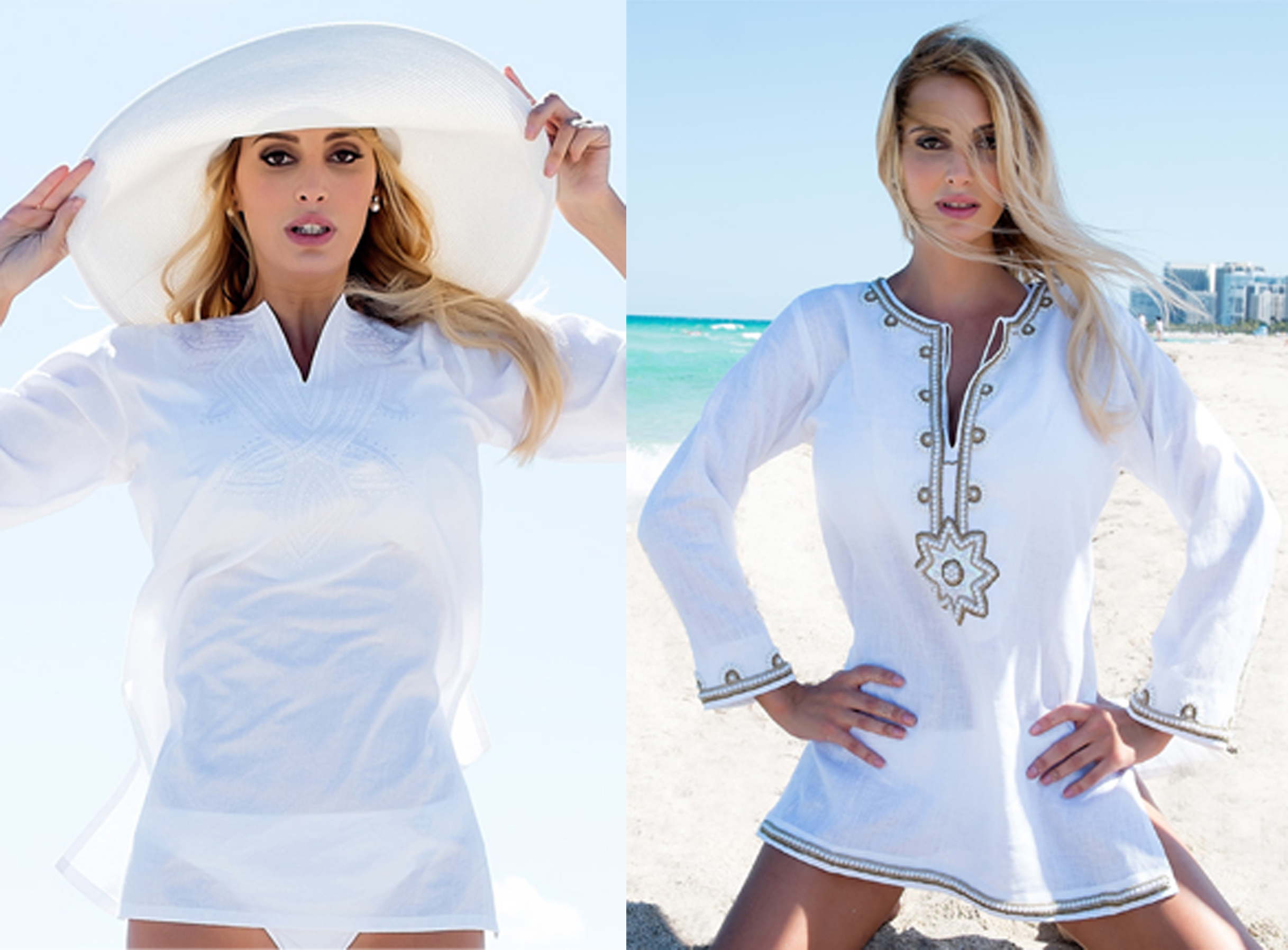
All aboard for chocolate and cheese!
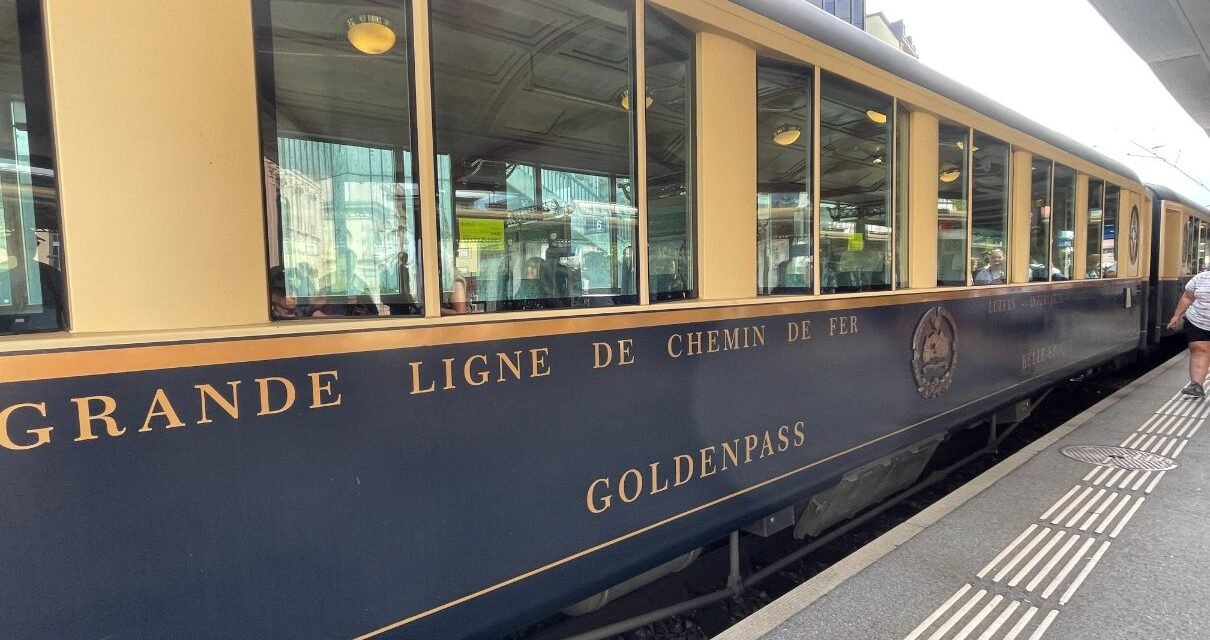
If you know me, then you’re aware of the fact that chocolate and cheese are two of my favorite foods. It’s hard for me to go more than a day or two without having either or both of these delectable delights. But I’m picky. It can’t just be any old chocolate or any old cheese. If I’m going to ingest the calories, it’s got to be top quality products. No waxy, tasteless chunks. Rich, dark chocolate please! Double cream brie!
So, you can imagine my joy at being in Switzerland, land of chocolate and cheese. Double the pleasure! And it should come as no surprise that I immediately booked myself a seat on the Chocolate Train. This memorable journey aboard the Belle-Epoque train, began in Montreux, a postcard-pretty town on the shores of Lake Geneva. It included a tour of Maison Cailler’s chocolate factory in Broc plus a visit to La Maison du Gruyére for the cheese side of things. And in between the two, we stopped in the medieval village of Gruyére.
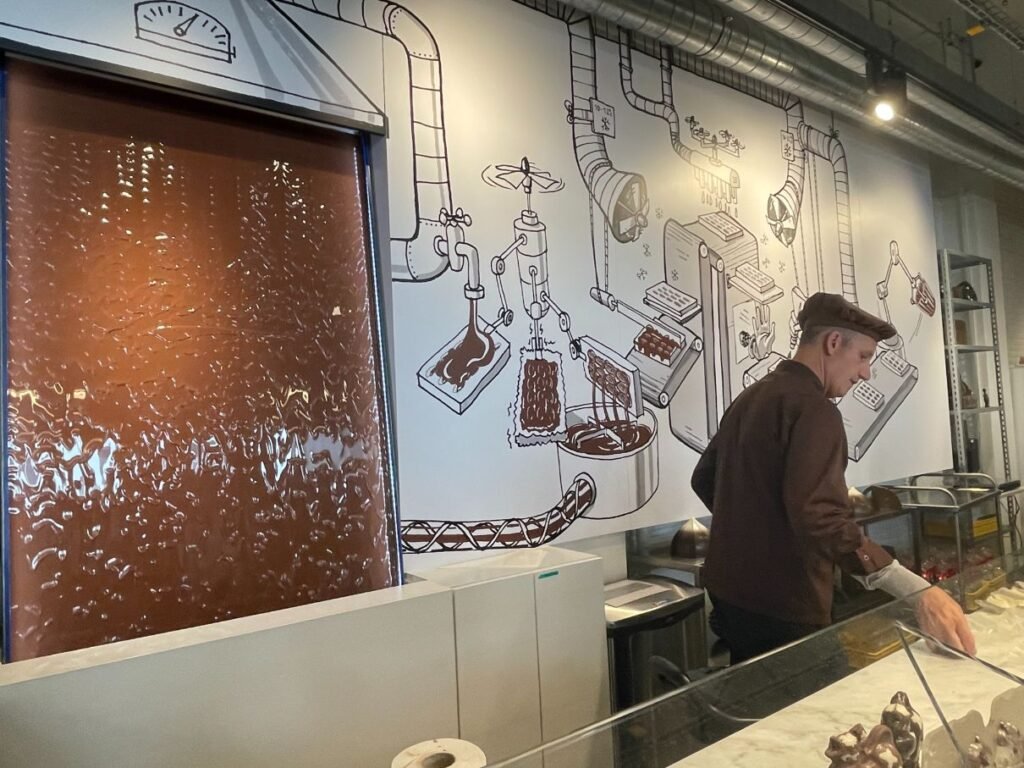
Chocolatier at Cailler
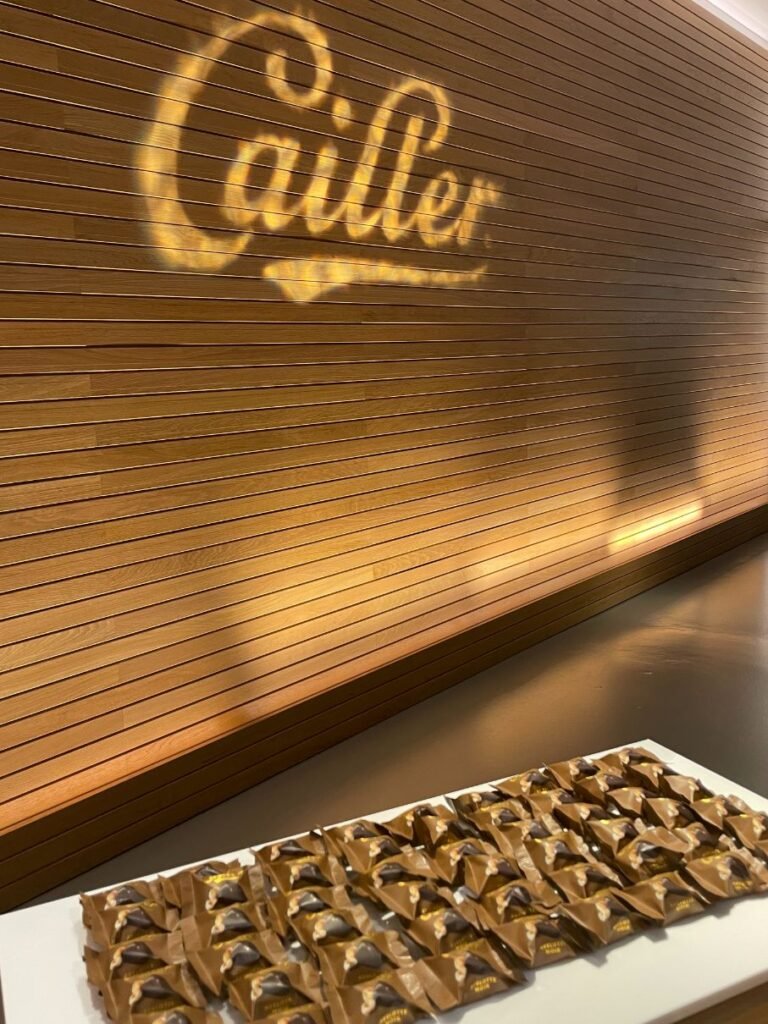
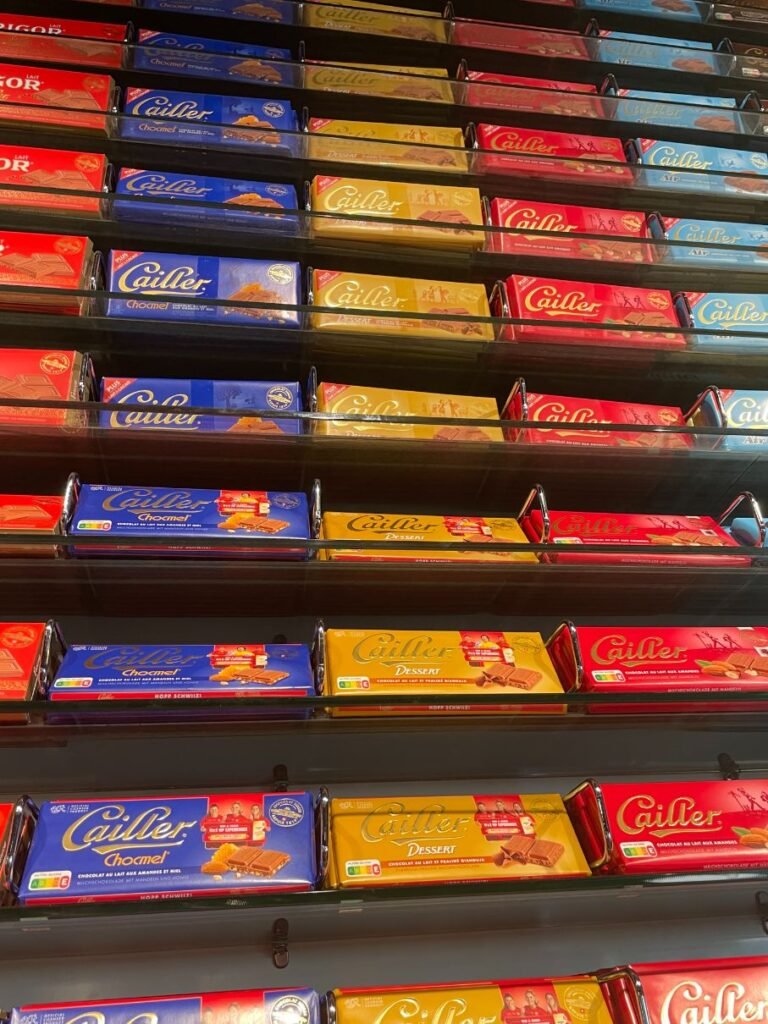
Chocolate and more chocolate

On the Chocolate Train
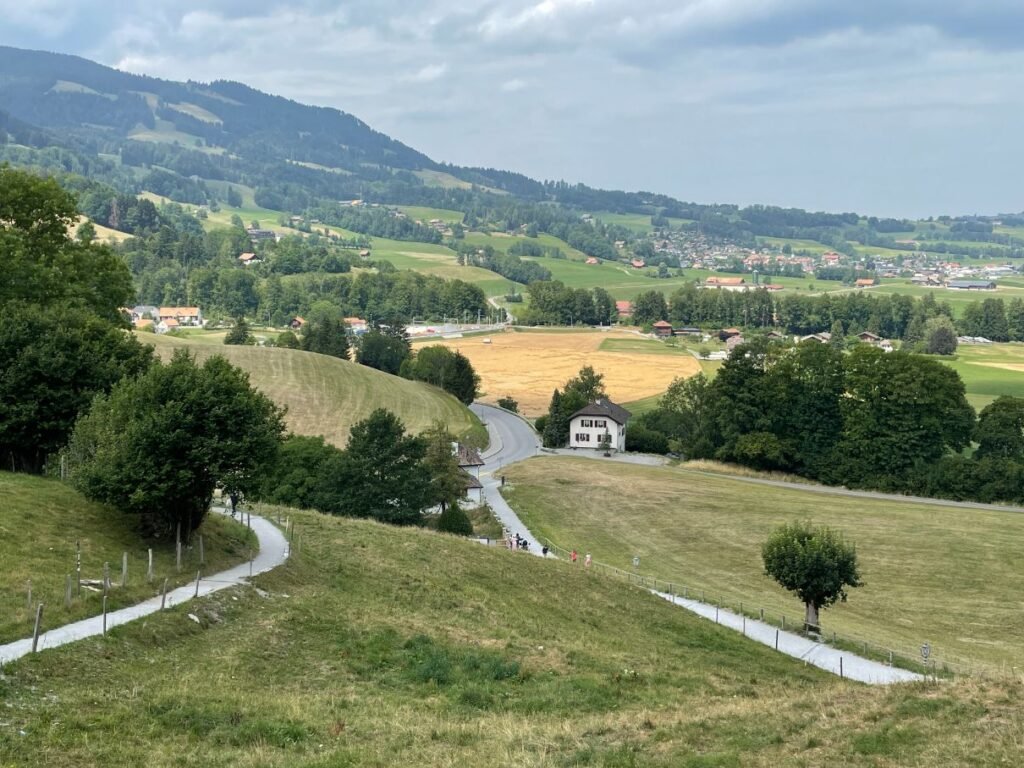
Picturesque countryside of Gruyere
The tour is not only irresistibly delicious, but informative, as you’ll learn plenty about these national passions of Switzerland. On average, every Swiss person eats around 26 pounds of chocolate a year, more than anywhere else in the world. And the country is one of the biggest chocolate producers, manufacturing a whopping 180,000 tons annually.
Swiss chocolate’s reputation for chocolate excellence stems from the country’s 19th century chocolatier pioneers and their creative inventions. Over the years, chocolatiers have continued to up the ante with innovative recipes and improved manufacturing process, while always striving for exceptional quality.
Some of the biggest names in Swiss chocolate are Cailler, Lindt & Sprüngli and Frey. Francois-Louis Cailler, for example, was the first to make chocolate solid, so we have him to thank for the chocolate bar. And Rodolphe Lindt developed a special machine that made it possible to produce melting chocolate for the first time.
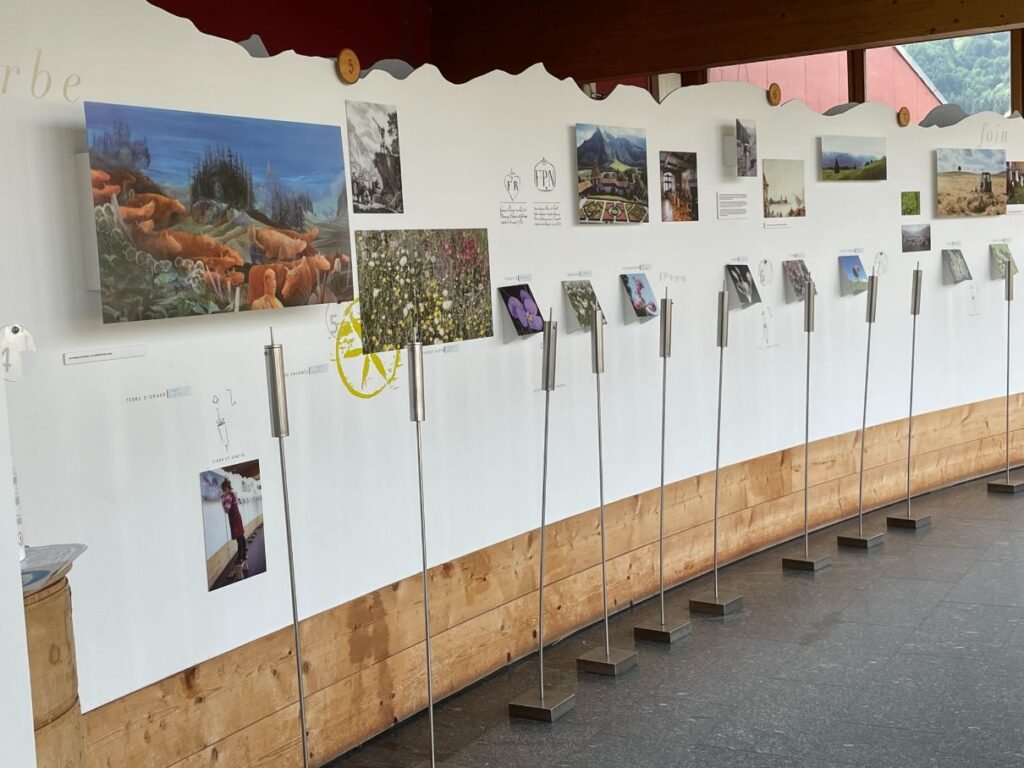
Embark on a sensory journey to see how cheese is made

Cheesemaking in the factory

Cheesemaking is an art
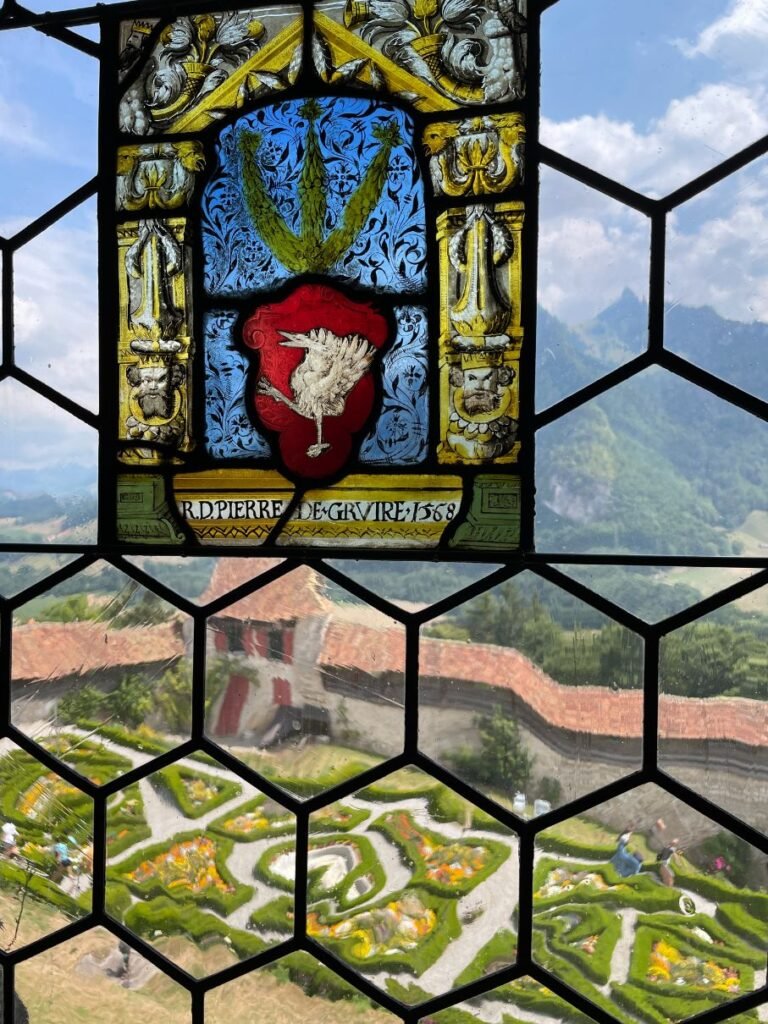
A view from Gruyeres Castle
Cailler is actually the first modern brand of Swiss chocolate and the oldest still in existence, since 1819. The company was eventually bought by Nestlé in 1929 and became a brand, but still operates largely independently.
At the Maison Cailler’s authentic chocolate factory in Broc, you’ll embark on a sweet adventure. The one-hour multi-media tour explores the history of chocolate, from Aztec cocoa ceremonies to the eye-opening innovations of today. You’ll learn how chocolate came to Europe via the Spanish conquistadores, how the pope gave his blessing for chocolate as a wholesome drink, how the French took it into their boudoirs and how the Swiss refined the product during the 19th century. There’s a small-scale, fully automated chocolate production line that can be seen in action and you can also look through windows into the main factory floor.
The tour concludes with the opportunity to sample some of the goodies. You can try dark, milk and white chocolate, with and without nuts, pralines and more. And there’s a gift shop selling all forms of the chocolates for your take-home pleasure.


Enjoy cheese fondue
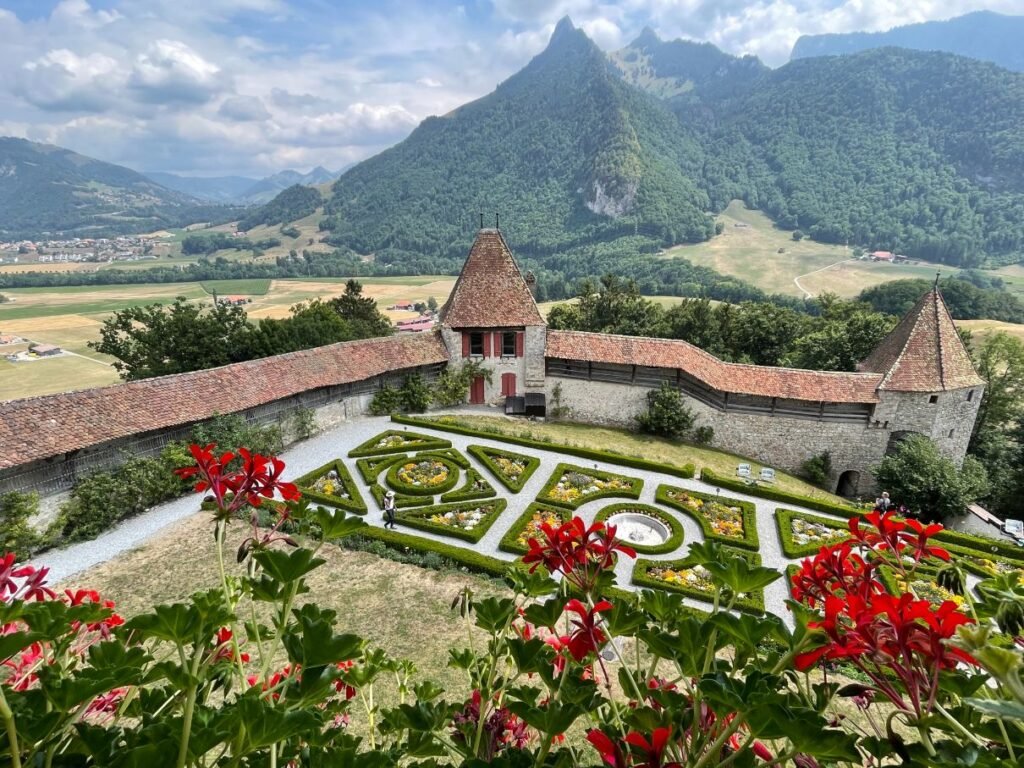
Formal gardens at the Gruyeres Castle
But now let’s talk about cheese. This product is big business in Switzerland. There are over 450 different kinds of Swiss cheese and the average Swiss person consumes almost 50 pounds of the stuff a year. One of the reasons why cheese is such an important commodity here is that it’s an integral part of Swiss cuisine. Not to mention that other cuisines also rely on cheese.
Gruyére is one of ten Swiss cheeses that carries the AOP label, which indicates that it is only made in its region of origin and is patented so you won’t find it being made anywhere else in the world. It’s a cheese with a long tradition and the process of making it has been handed down over many generations. At the Gruyére factory, master cheesemakers and their team produce nearly 50 wheels of Gruyére a day.

Gruyeres Castle
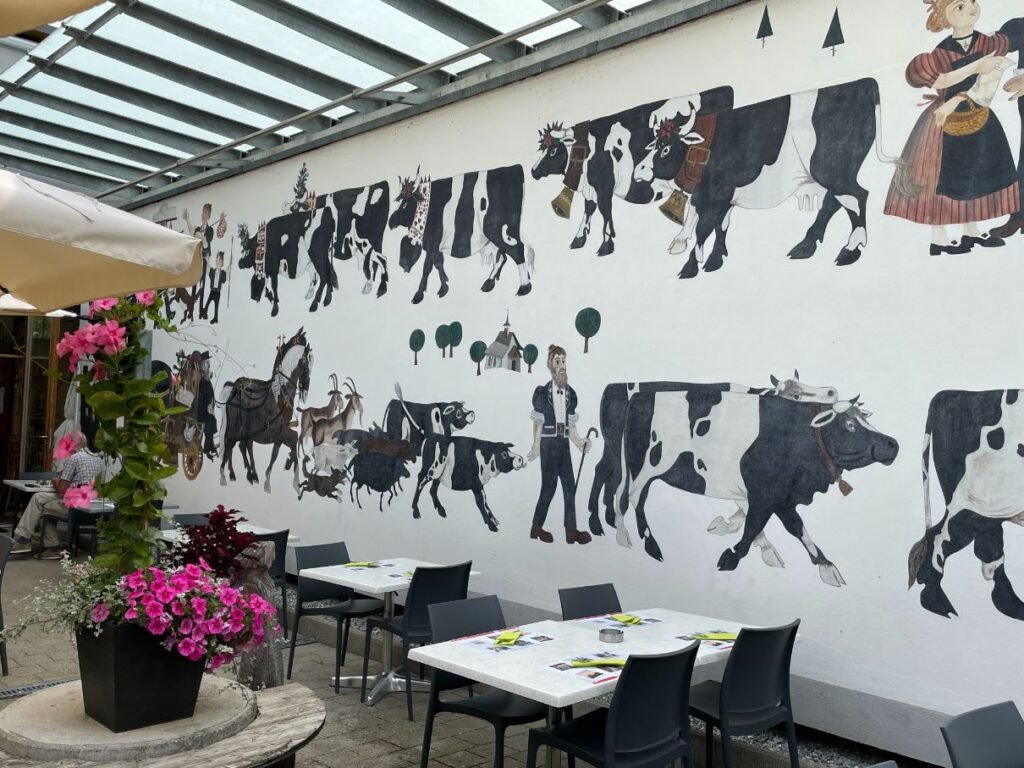
It all starts with the cows

Picturesque countryside of Gruyere

Informative exhibits on cheesemaking

Inside Gruyeres Castle
The self-guided audio tour introduces you to the dairy’s cow Cerise, who then guides you through a sensory experience. You’ll hear the sounds of cowbells and cows bellowing, and streams rushing down the mountain, as you begin the journey of cheesemaking. And it all starts with the cows and the pastures.
The olfactory sense is represented by nature’s aromas and the hay that the cows eat, while touch plays its role, as you can feel various objects like cowhide, milk canisters, dried herbs and a cheese brush. Sight is everywhere from the videos, pictures, information panels, interactive games and more on display. You can look at the vats on the factory floor and watch the team at work, and then get a glimpse of the cellar where all the glorious cheese is stored while maturing. And then you can taste the cheese at three different stages of maturity: 6, 8 and 10 months. Naturally, there’s a gift shop and a café, where you can get all things cheese.
Both the chocolate and cheese factories’ tours were interesting and tasty, but equally as enjoyable was the visit to the little town of Gruyéres. Located in the picturesque Alpine foothills, this hamlet gives its name to the region and its flavorful cheese. Stroll through the village, with its charming shops, museums and cafes. There’s even a castle to tour.
The HR Giger Museum, for example, showcases the works of HR Giger, a designer, painter and sculptor. The artist, who was born in Switzerland, liked to delve into the inner side of the human body. He focused on such themes as birth, subconscious, dreams, nightmares, suffering, war, machines, fear and death. His images have a dark, surrealist component and may be disturbing to some viewers.
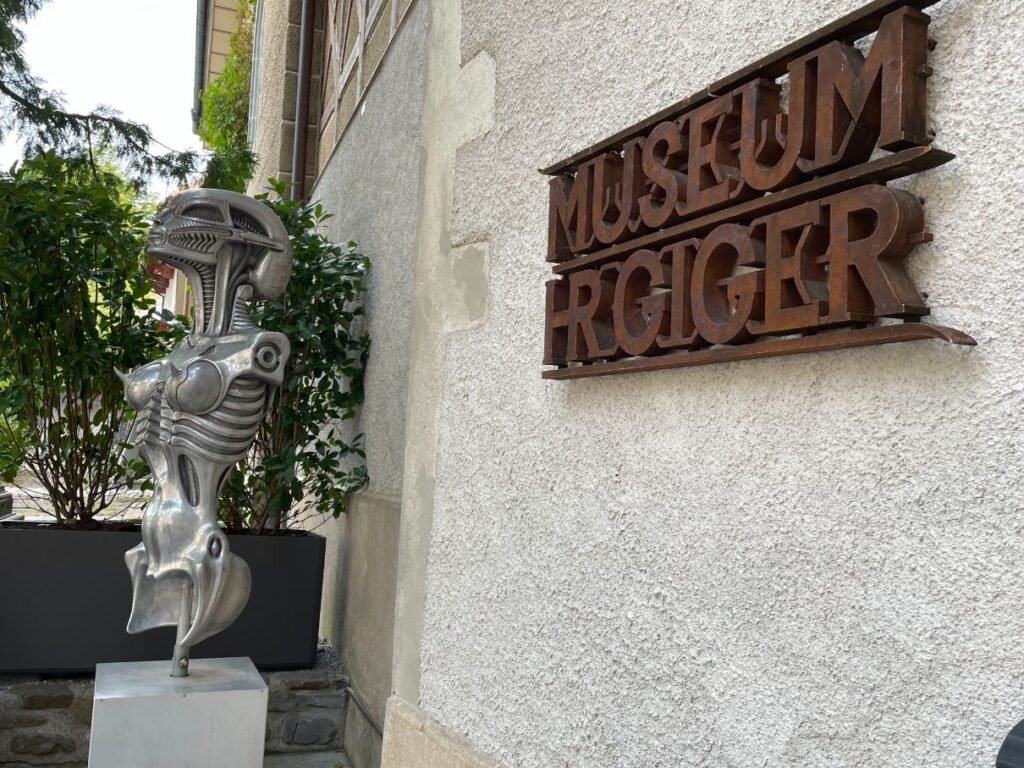
HR Giger Museum
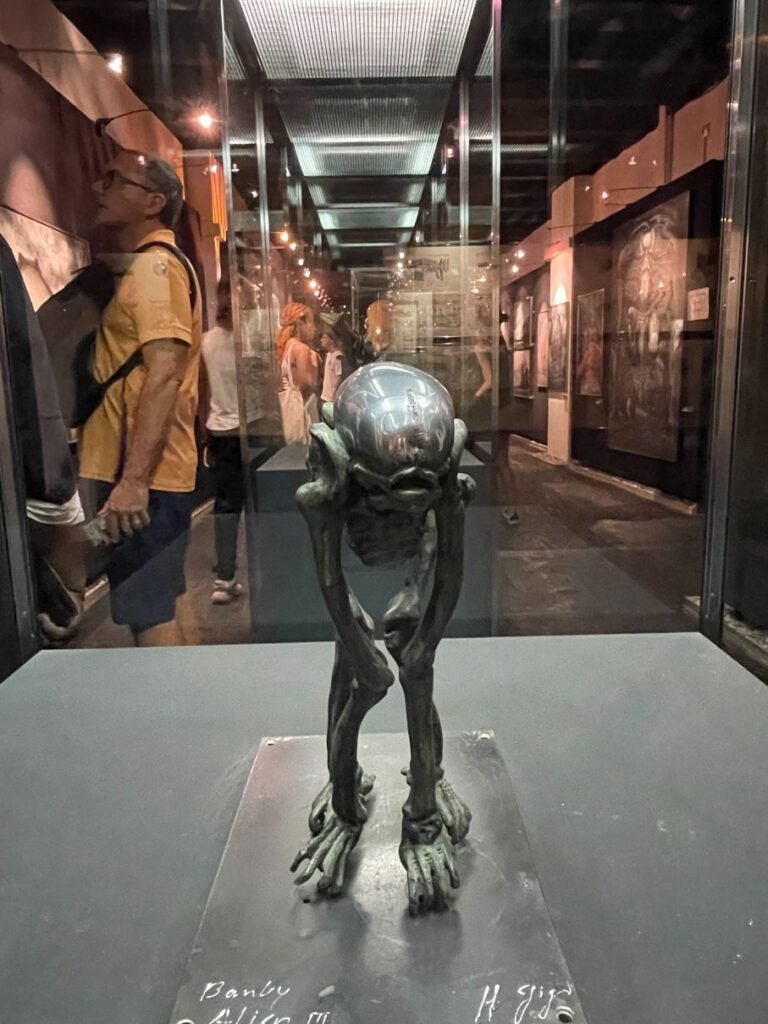
Alien at the Giger Museum
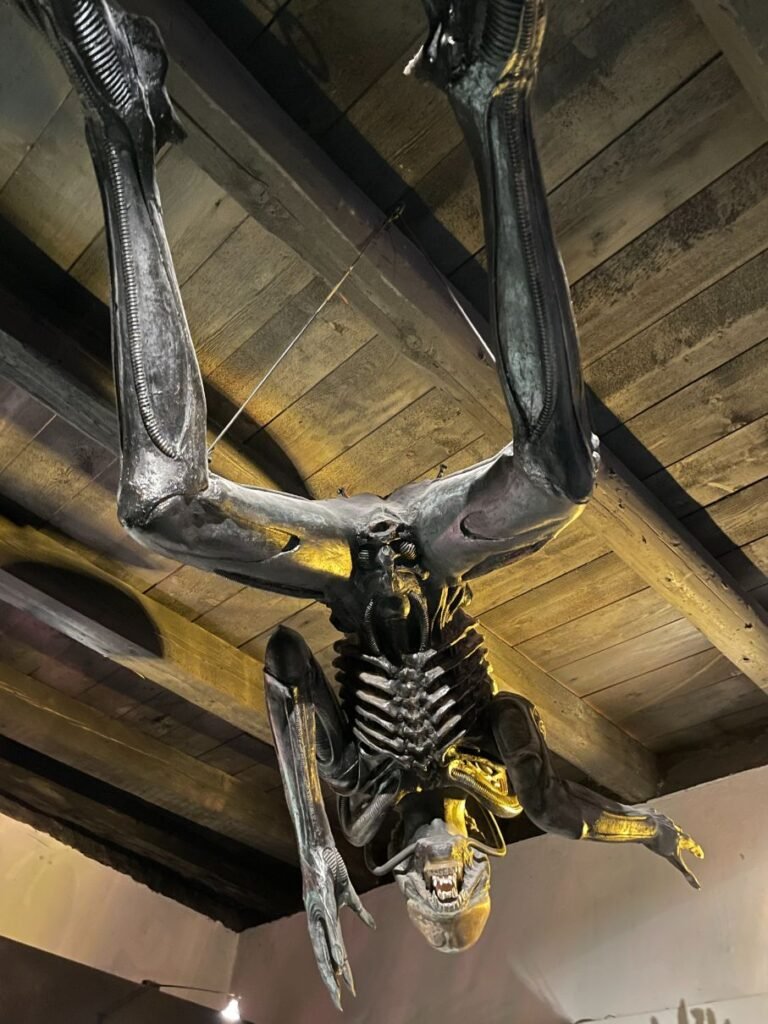
Sci-fi character at Giger Museum
Giger’s talents also lent themselves to the music genre, where he designed many covers for groups such as Emerson Lake & Palmer and Debbie Harry. But perhaps, it’s his foray into cinema that earned him the most fame, as he was the creator behind the character Alien for the film of the same name. And in 1980, he received the Oscar for Best Visual Effects for said movie. He went on to create several other characters and settings for films, like “Dune,” “Poltergeist II,” and “Species.” You’ll find a range of these sci-fi creatures in the museum, along with Giger’s sketches and models.
Head uphill to the Gruyéres Castle for a blast to the past. This majestic chateau boasts Baroque, Renaissance and Romantic styles of architecture and was built in the 13th century. It’s currently a museum with eight centuries of history on display. Don’t forget to check out the lovely formal garden.
When you’re done with the sights, pick a café and sit down for some cheese fondue, made with Gruyére cheese of course. Dip pieces of crusty bread, boiled potatoes and cornichons into the pot of hot, melted goo for a swoonworthy culinary experience.
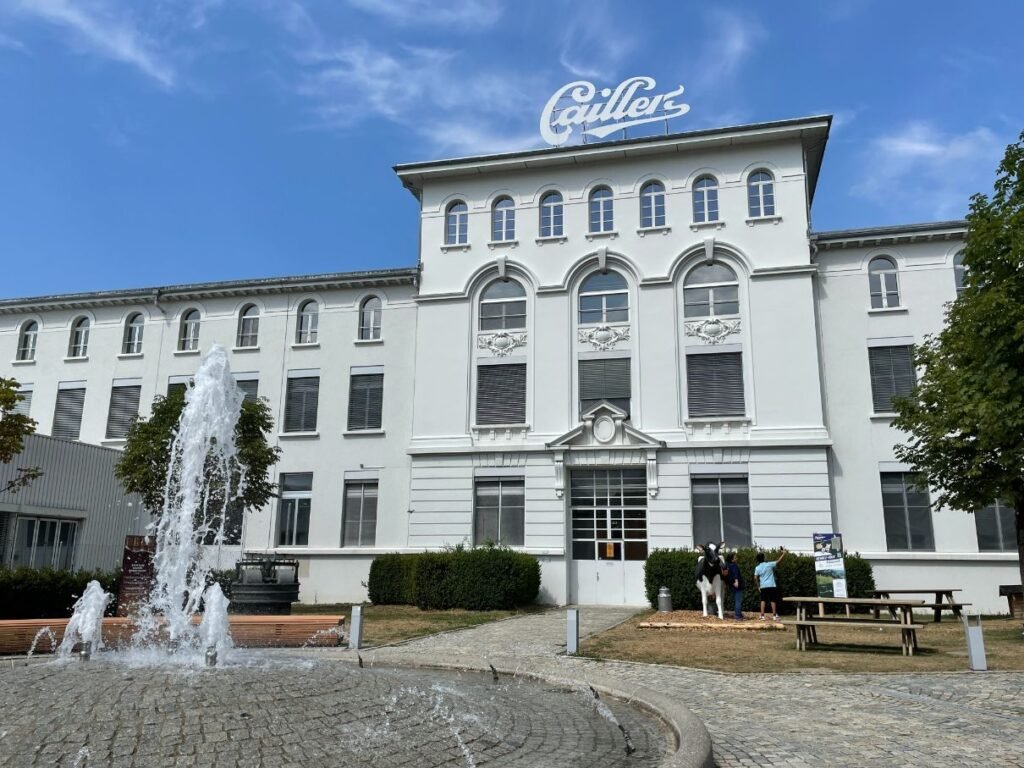
Maison Cailler

Interactive exhibits at Cailler
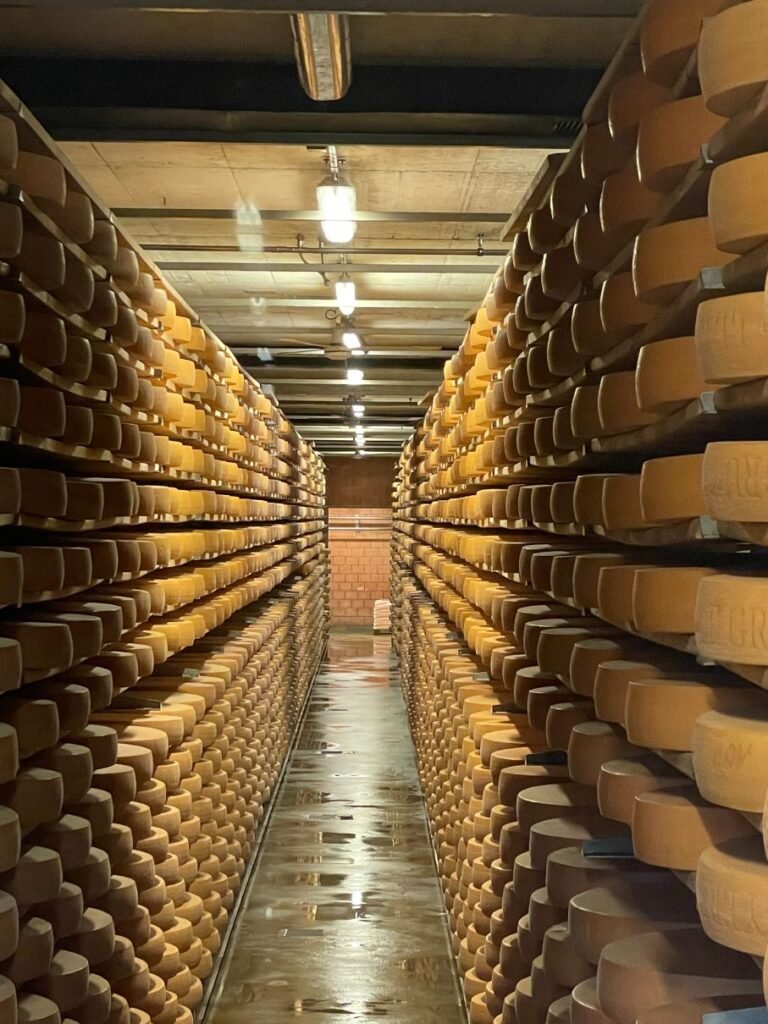
The cheese cellar
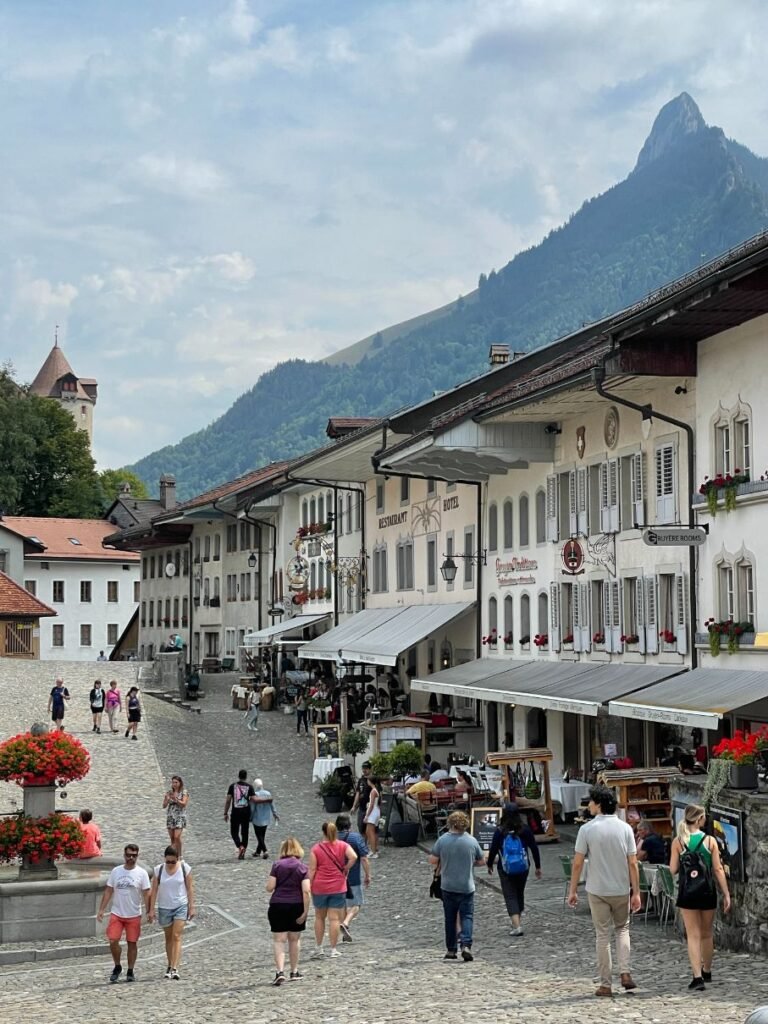
The village of Gruyeres


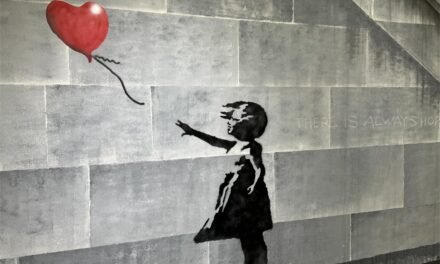







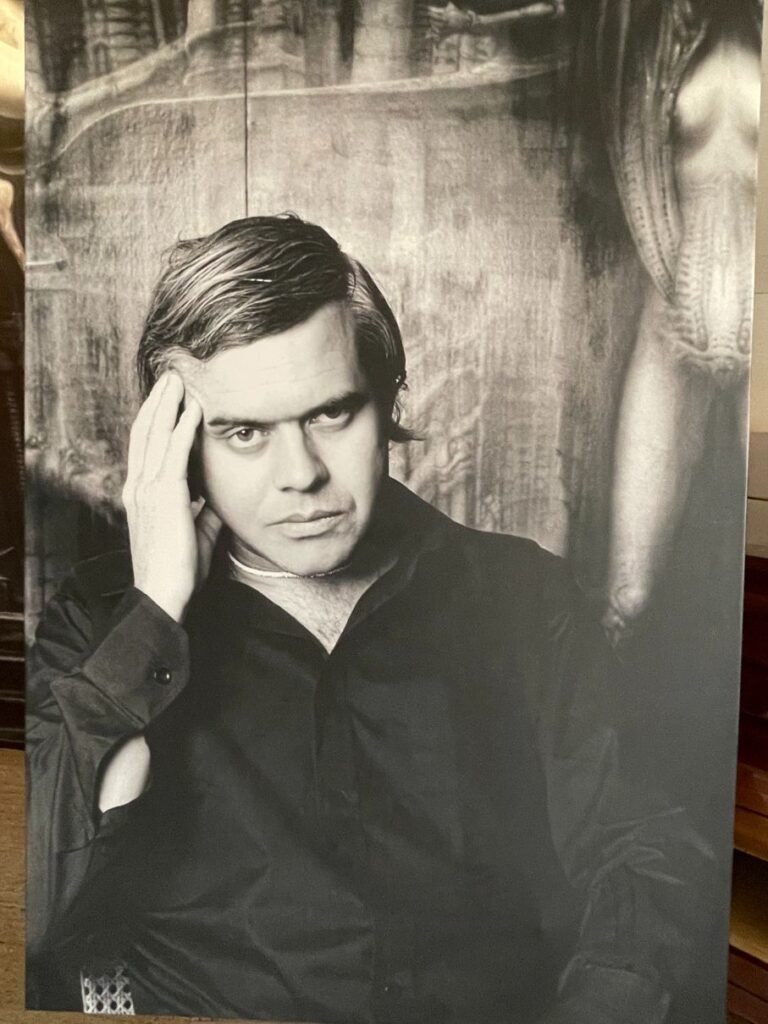


![Celebrate Oktoberfest with Sierra Nevada Brewing Co. [COCKTAIL TIME]](https://luxebeatmag.com/wp-content/uploads/2021/09/Screen-Shot-2021-09-15-at-8.34.03-AM-440x264.png)

